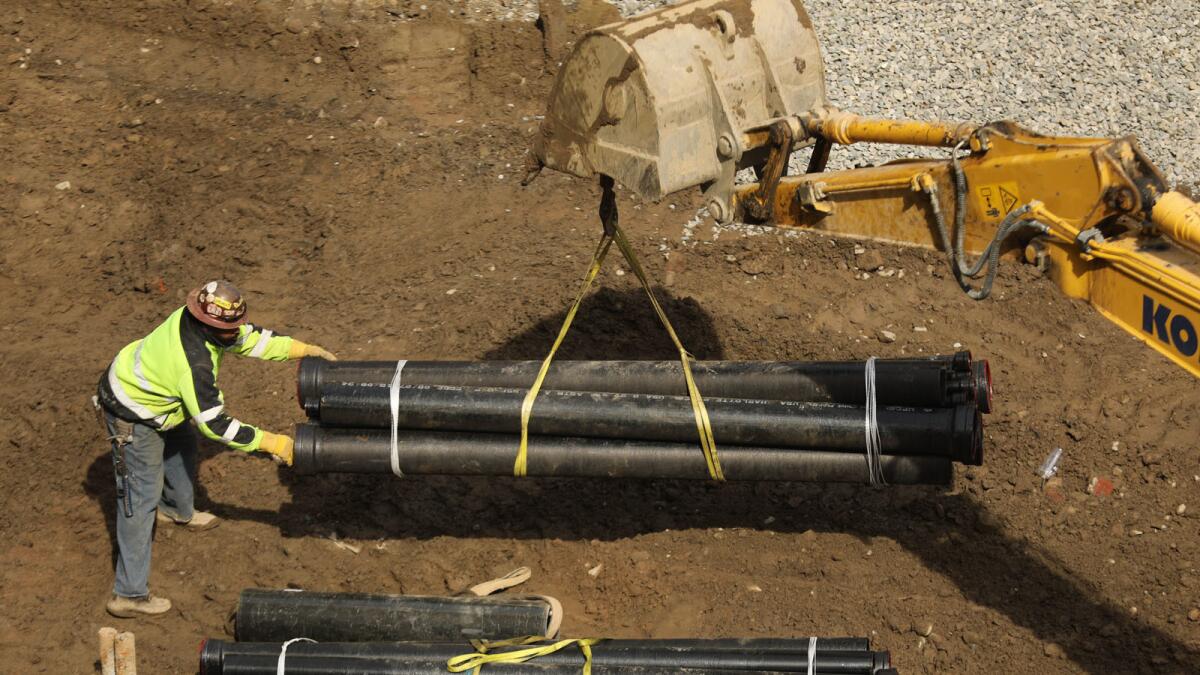U.S. jobs rebound and unemployment holds steady. Wage growth slows

The U.S. labor market sprang back in March and hit the Federal Reserve’s sweet spot, alleviating some concern about a deeper economic downturn.
Hiring was better than expected and unemployment hovered near a five-decade low, signaling that demand for workers remains robust even as employers confront economic crosscurrents. Wage growth slowed, reinforcing the Fed’s message that interest rates are on hold, while payroll growth indicated that February’s weakness in that area was an anomaly.
“This report was welcome evidence that the economy is not falling off a cliff, there’s not a recession coming. This is the kind of report that we needed after such an eye-popping number in February,” said Ellen Zentner, chief U.S. economist at Morgan Stanley. “I would call this a normalization, after very volatile numbers in the first part of the year.”
The report aligns with Fed officials’ views that although the job market remains tight, global growth concerns weigh on the outlook and inflation is still subdued. Despite signs of recent weakness in manufacturing and retail sales and reduced participation in the labor force, the report shows the economy is broadly intact.
U.S. employers added a net 196,000 jobs to their payrolls in March, up sharply from a 33,000 net gain in February, according to the Labor Department report released Friday. That beat the gain of 177,000 that analysts surveyed by Bloomberg had expected for March. And February’s tally was revised upward from an initially reported 20,000.
U.S. stocks rose for a seventh day.
The jobless rate in March was 3.8%, unchanged from the month before, the Labor Department report said.
Average hourly earnings increased 3.2% from the same month last year — falling short of all estimates and down from the best pace of the expansion. Still, that leaves the Fed in an ideal position, according to Anwiti Bahuguna, senior portfolio manager at Columbia Threadneedle Investments.
“Job growth is not so strong that one starts wondering if there’ll be inflationary pressure,” and not weak enough to signal a far more significant slowdown, she said by phone. “It’s neither worrisome from a recession point of view nor from an inflationary point of view.”
White House economic advisor Larry Kudlow reiterated his position that the Fed should cut interest rates to preempt any potential threats to the economy amid muted inflation.
President Trump took that a step further: The Fed should cut interest rates and reverse the shrinking of its balance sheet, he said, stepping up pressure on the central bank over monetary policy. “They should get rid of quantitative tightening” and instead restore quantitative easing, Trump told reporters at the White House on Friday.
The data signal a labor market solid enough to support growth in coming months even if job gains are moderating from last year’s pace. Unemployment near historic lows bodes well for consumer spending, though slower growth in wages suggests inflation will be even more muted as Fed policymakers wait to see how the economy weathers a synchronized global slowdown.
“This a perfect report for the Fed because it actually corroborates what they’ve been saying all along, which is there are no wage pressures,” Subadra Rajappa, head of U.S. rates strategy at Societe Generale, said in an interview. “There’s very little risk of wage inflation.”
Investors expect an interest rate cut this year after four hikes in 2018. Early this year, the Fed removed projections for rate increases in the near term and flagged growing economic risks amid slowing global growth.
March’s job growth was led by the education and health services sectors as well as the professional and business services sector. Construction payrolls rebounded, expanding by 16,000. The manufacturing sector continued to weaken, losing a net 6,000 jobs — its first decline since mid-2017. Other data had earlier shown a mixed picture for factory employment.
The participation rate, or share of working-age people in the labor force, decreased to 63% from 63.2% the prior month. The rate, which faces continued downward pressure as older workers retire, had ticked up in recent months as increased employer demand pulled more people into the workforce.
January and February payroll figures were revised upward, showing a combined 14,000 more jobs than previously reported, though the three-month average decreased to 180,000 from 191,000.
Real wages
That lower average “is kind of expected as the expansion continues to mature,” said Erica Groshen, who is a visiting senior scholar at Cornell University’s School of Industrial and Labor Relations in Ithaca, N.Y., and a former Bureau of Labor Statistics commissioner. She added that Americans are still getting a boost to real wages because pay has been growing faster than the consumer price index, which rose at a 1.5% annual rate in February.
Friday’s report showed average hourly earnings rose 0.1% from the prior month, falling short of estimates, following a 0.4% gain the month before. A longer workweek may also have had an effect on wages: The average for all private employees rose to 34.5 hours from 34.4 hours. A longer workweek tends to reduce average hourly pay.
Private employment also rebounded, showing that payrolls grew by 182,000 jobs after an upwardly revised increase of 28,000 the month before; government payrolls expanded by 14,000 jobs.
“The ability to spend is there. We’re creating jobs. Incomes continue to move higher,” Morgan Stanley’s Zentner said. “The willingness is what we didn’t have in the first quarter, and that’s tied to consumer confidence.”
More to Read
Inside the business of entertainment
The Wide Shot brings you news, analysis and insights on everything from streaming wars to production — and what it all means for the future.
You may occasionally receive promotional content from the Los Angeles Times.










